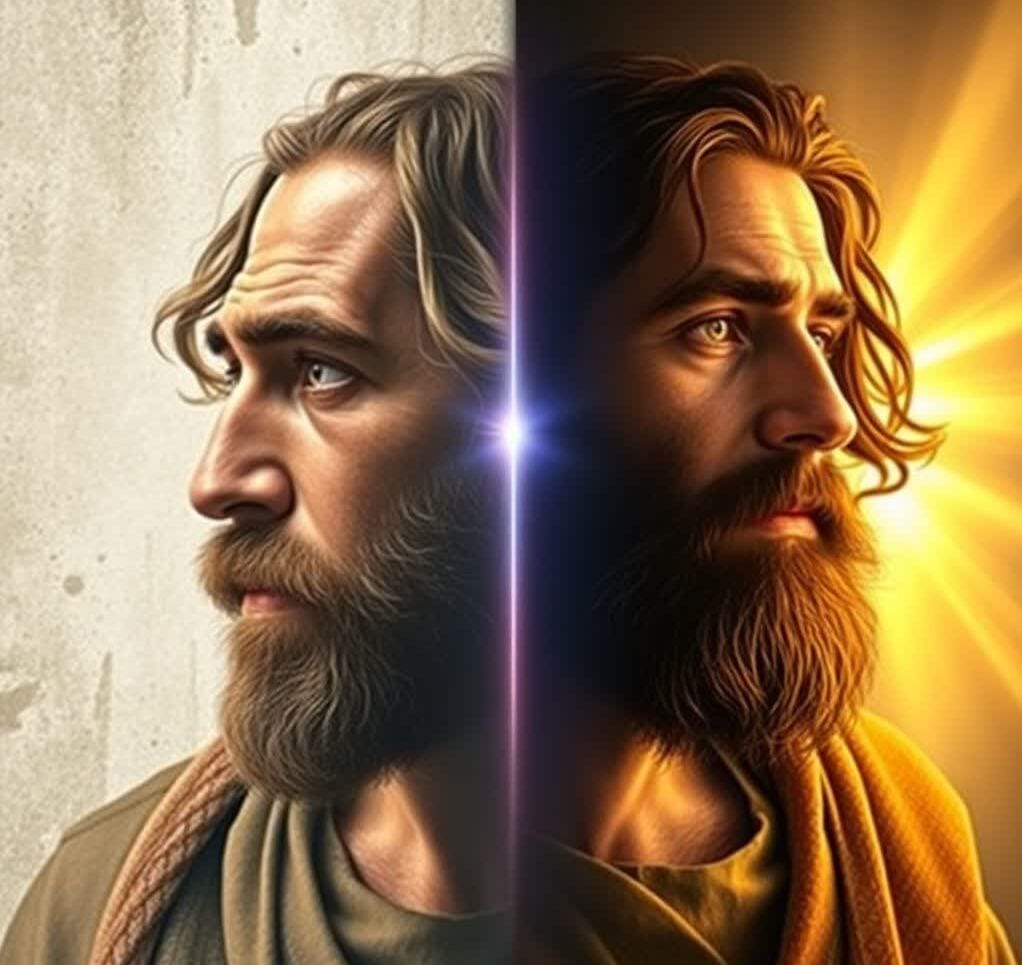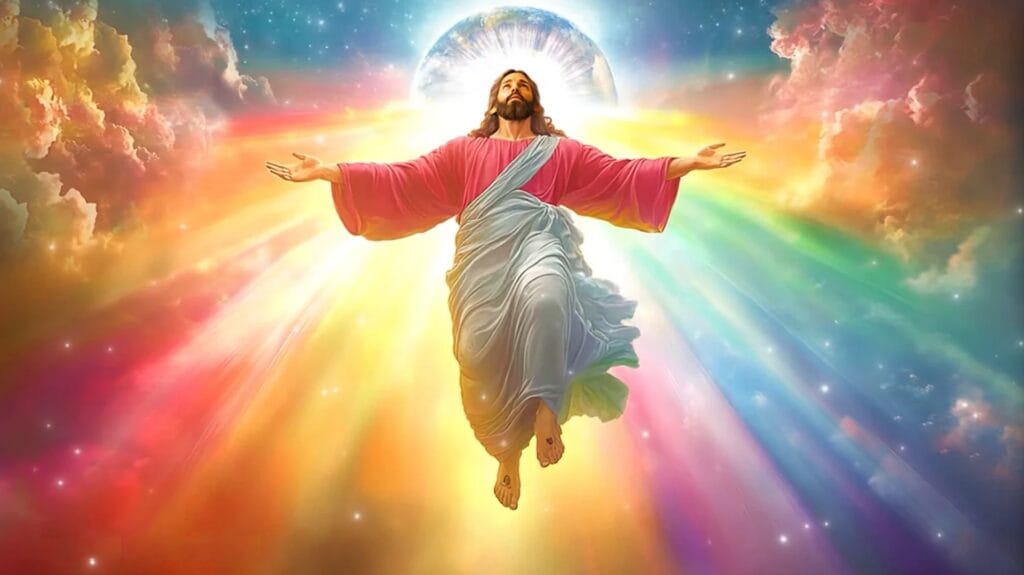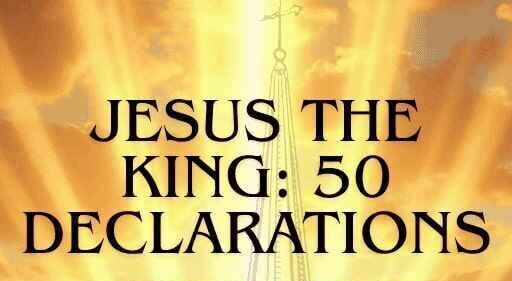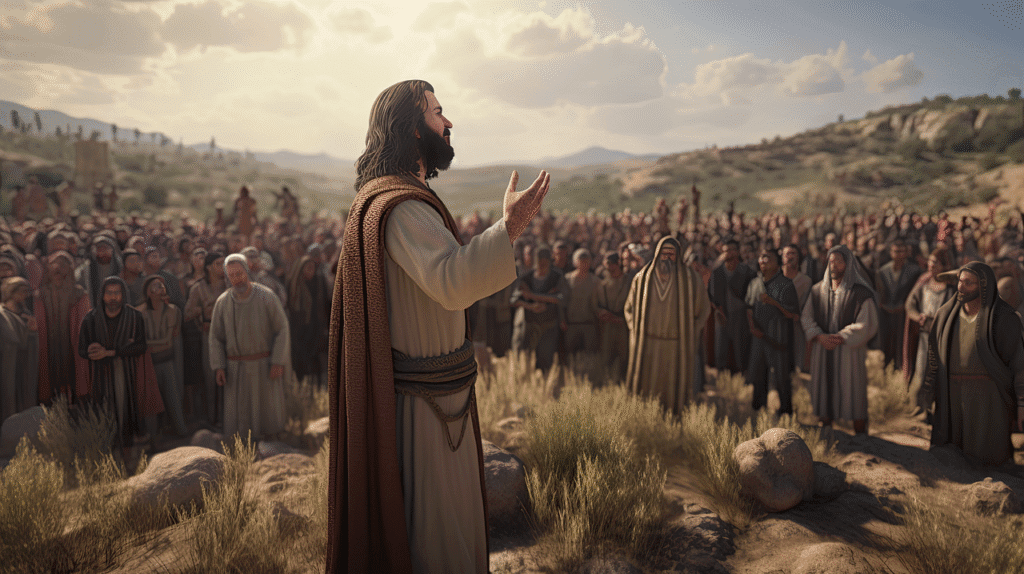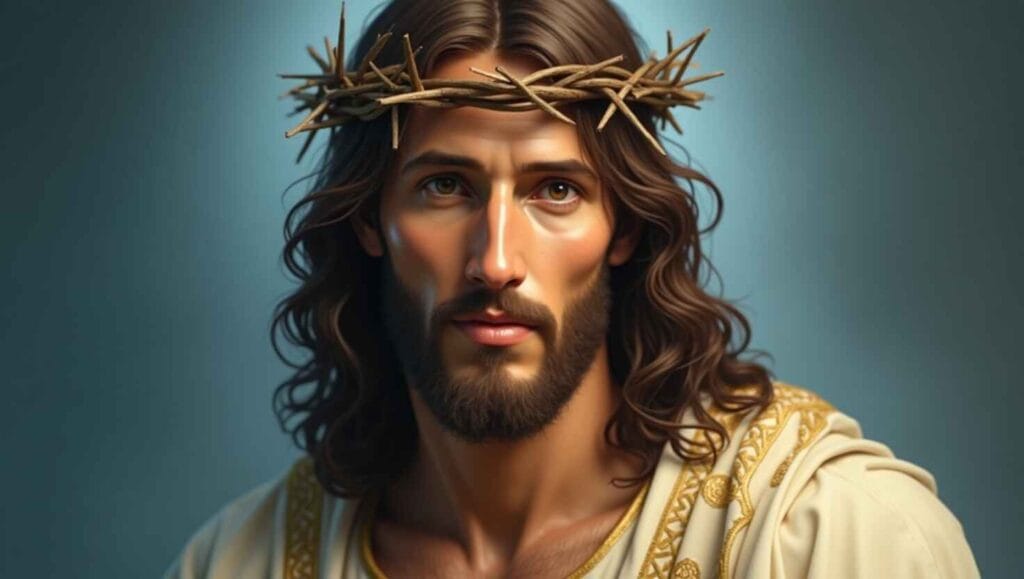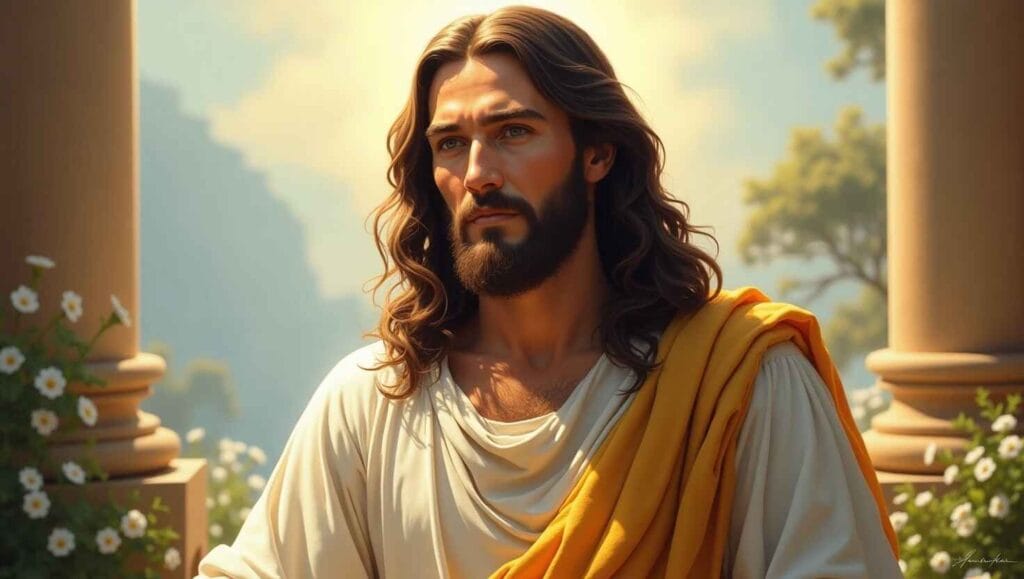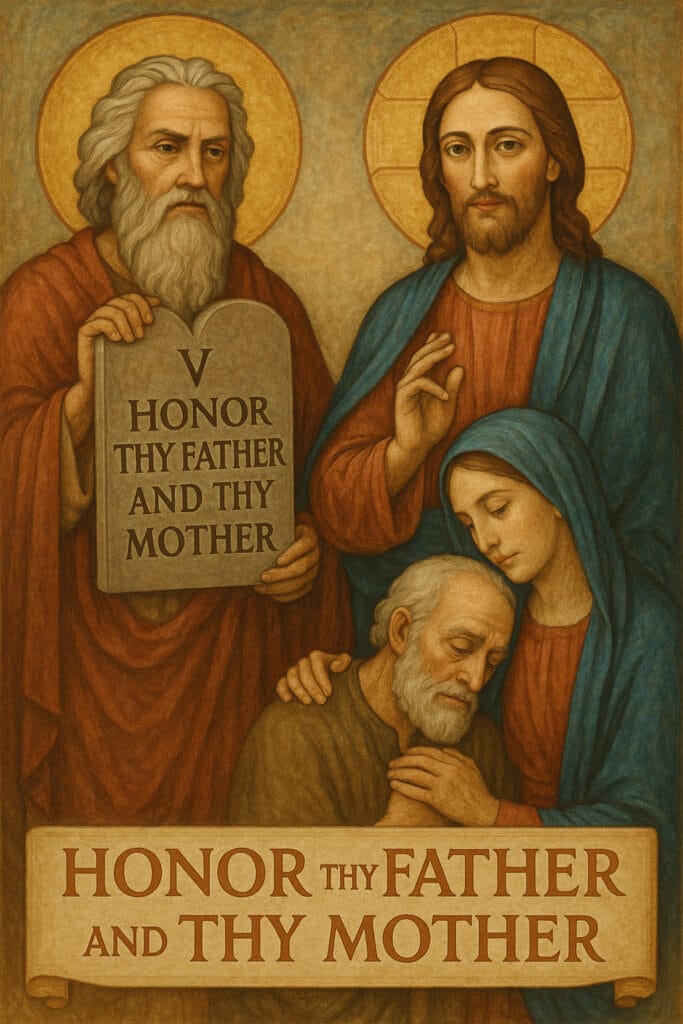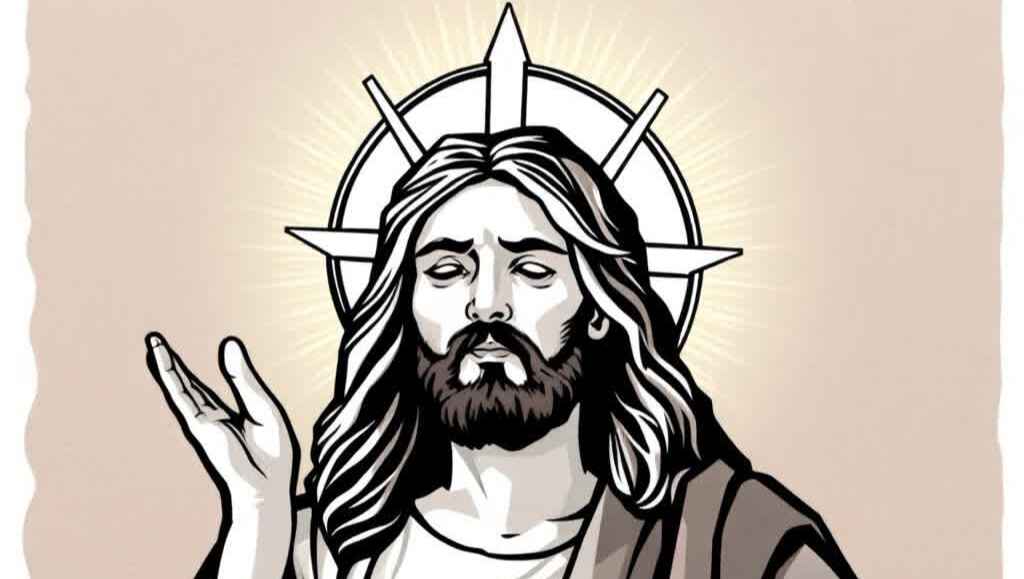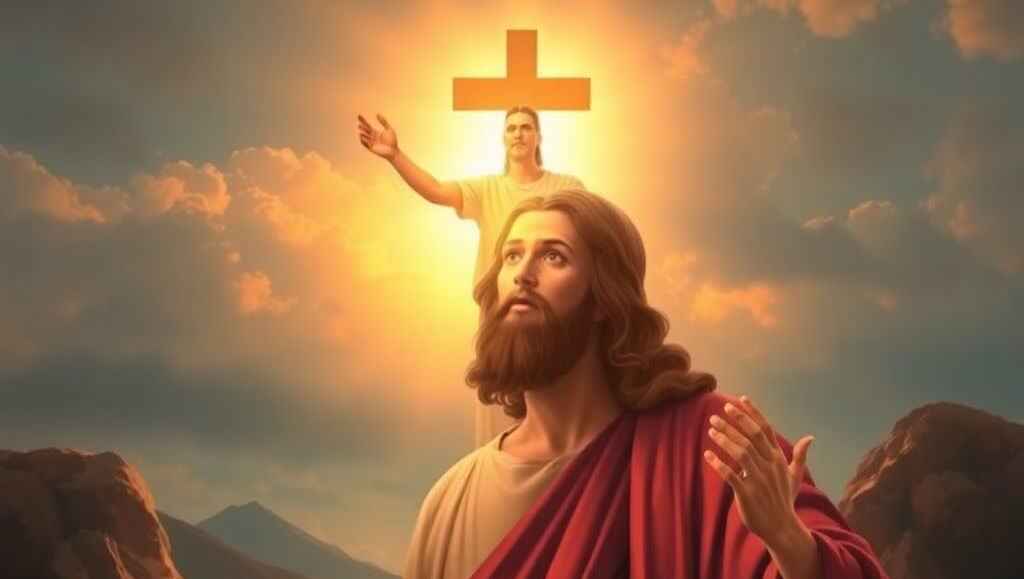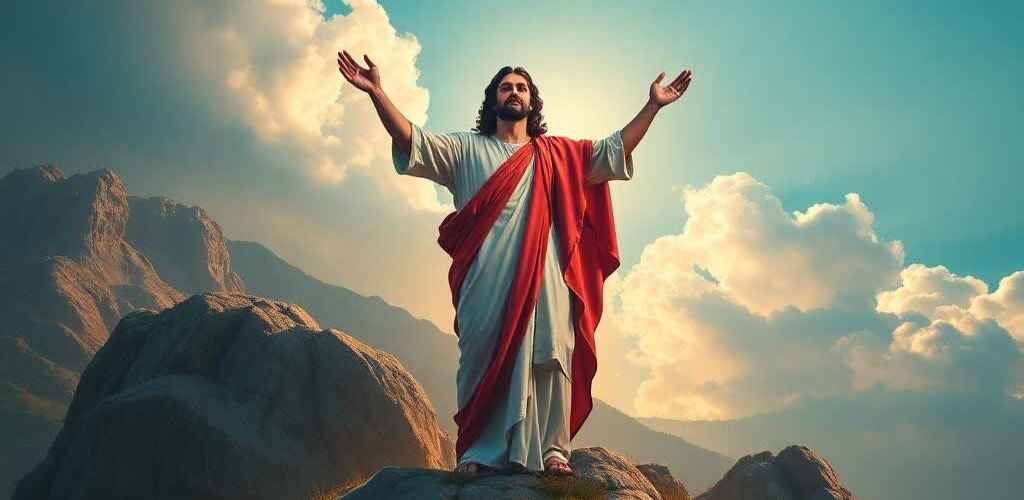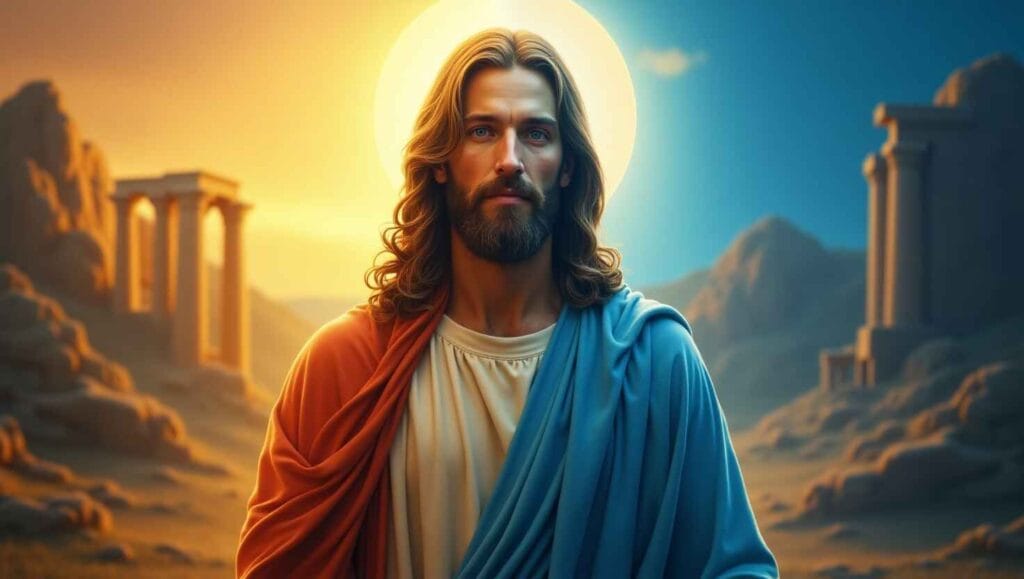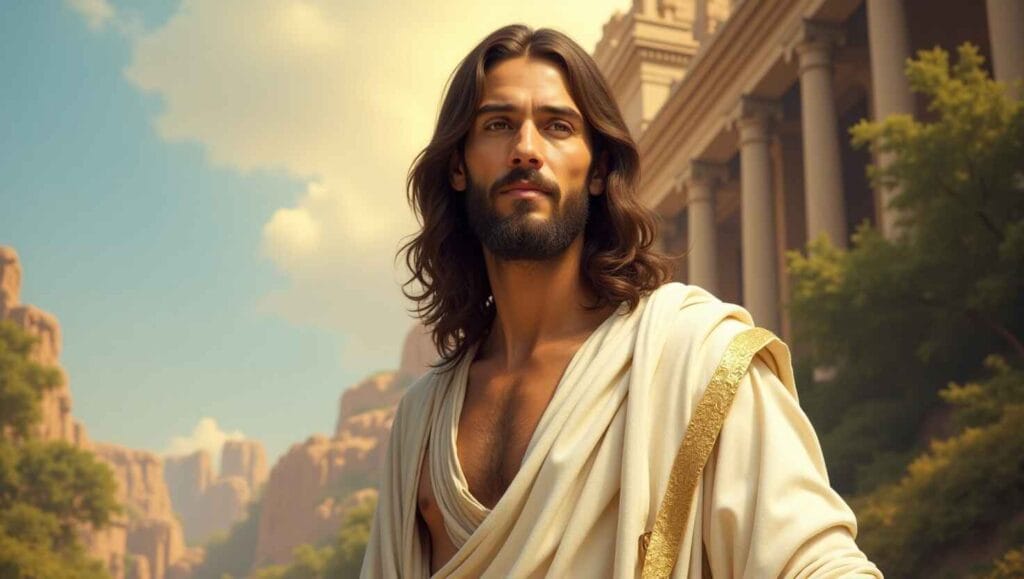
Introduction: The Radical Jesus—Beyond the Gentle Shepherd
For centuries, Jesus of Nazareth has been popularly portrayed through the lens of meekness, serenity, and passive holiness—a gentle shepherd guiding lost sheep, a peaceful moral teacher urging love and forgiveness, or a spiritual mystic detached from the practical concerns of worldly life. In art, music, liturgy, and literature, he is often framed as the embodiment of kindness and personal salvation, a figure cloaked in divine light, removed from the political and societal grime of his era.
While this traditional depiction has offered comfort and inspiration to millions, it only tells part of the story. It overlooks a deeply compelling and historically grounded dimension of Jesus’s life and message: his role as a radical social reformer. Far from simply floating above the frictions of first-century Palestine, Jesus entered directly into its tensions—challenging oppressive structures, confronting entrenched hierarchies, and calling for a new vision of community and justice. His teachings did not merely soothe consciences; they disrupted power. His actions were not only spiritual but subversive. He did not come to affirm the status quo but to overturn it—nonviolently, but powerfully.
To understand the full force of Jesus’s message, we must immerse ourselves in the sociopolitical world he inhabited: a land under the boot of Roman imperialism, religiously governed by a Temple aristocracy deeply entwined with political power, and economically strained by systemic inequality, land loss, and exploitative taxation. Into this world walked Jesus—an unarmed, itinerant preacher from a small Galilean village—yet his voice rang louder than empires, his compassion stirred unrest in sanctuaries, and his vision captured the hearts of both the oppressed and the threatened.
Jesus’s mission, as presented in the canonical Gospels, was far from passive. It was an active engagement with the brokenness of society, a confrontation with empire not through the sword, but through solidarity with the poor, healing of the marginalized, and proclamation of a radically inverted kingdom—where “the last shall be first, and the first last” (Matthew 20:16). The Sermon on the Mount was not a vague spiritual manifesto; it was a bold public declaration of alternative values meant to challenge the prevailing worldview of both Rome and Temple.
Indeed, Jesus was not crucified because he was simply kind or mystical. Crucifixion was a Roman punishment reserved for political insurgents, rebels, and threats to public order. That Jesus was executed in this way tells us something about how his actions and message were perceived by the authorities. His claim to kingship—”King of the Jews”—was not symbolic in the eyes of empire. His cleansing of the Temple was not a quiet theological statement, but a direct attack on a religious-economic system that had become, in his own words, “a den of robbers” (Mark 11:17). His refusal to align with violent resistance or political elites did not make him neutral—it made him dangerous in a wholly different, and arguably more revolutionary, way.
This article contends that Jesus must be reexamined not only as a spiritual figure but also as a radical reformer who intentionally subverted the dominant systems of his time. His movement was a grassroots campaign for justice rooted in compassion, dignity, and divine love, carried out through acts of nonviolent resistance and public confrontation with injustice. He did not seize power, but he exposed it. He did not retaliate, but he revealed the moral bankruptcy of violence and greed. He healed and forgave—but in doing so, he also reclaimed the humanity of those discarded by society, creating new social bonds that undermined the structures of exclusion and domination.
This was not accidental. Jesus was not simply caught up in events beyond his control; he shaped them. His actions—who he chose to eat with, touch, heal, bless, and speak against—were deliberate strategies in service of a broader, subversive vision: the coming of the Kingdom of God. This Kingdom was not simply an afterlife hope, but a present reality breaking into the world—a reordering of relationships, economics, and power dynamics under the reign of divine justice and mercy.
Through this lens, we see that Jesus’s ministry was revolutionary not in spite of his peacefulness, but because of it. He modeled a form of resistance that rejected both passivity and violence. His “turn the other cheek” command (Matthew 5:39) was not a call to submission, but a demand to confront oppression in a way that revealed its inhumanity without perpetuating it. His insistence on loving enemies was not weakness but a bold political act in a world saturated by vengeance and conquest. In healing the sick, restoring the outcast, and welcoming the sinner, he enacted a new kind of justice—one that humanized rather than punished, included rather than expelled, restored rather than destroyed.
As a result, Jesus was not merely offering individual salvation from sin; he was calling his followers into a radically new way of being community. A way rooted in shared resources, mutual care, humility, and peace. His message was threatening because it offered an alternative order—one that undermined the foundations of both Roman rule and religious elitism. And the power structures responded in the only way they knew: with execution.
Yet even the cross could not silence him. His resurrection, for believers, is not only a spiritual triumph but also a vindication of his movement—a declaration that love, justice, and truth endure beyond violence and death. It is, in essence, the ultimate victory of nonviolent resistance.
This article, therefore, explores three key dimensions of Jesus’s radical mission that are often overlooked in traditional interpretations:
Subversion of Societal Norms – How Jesus upended cultural, religious, and social hierarchies through his inclusive ministry and prophetic teachings.
Economic Justice – How Jesus directly and indirectly addressed economic inequality, condemned the idolatry of wealth, and offered a vision of shared abundance.
Nonviolent Resistance as Political Strategy – How Jesus’s methods of engagement with power were not merely moral ideals, but calculated actions to expose and transform unjust systems.
In doing so, we will not diminish his divinity, wisdom, or compassion—on the contrary, we will see them more fully, contextualized within the grit and gravity of his historical moment. Jesus was not just saving souls—he was reclaiming society.
This perspective is not new, though it has been marginalized over the centuries. Early Christians, especially in the first three centuries, often understood the political implications of following Jesus. It meant living in ways that stood against empire, against domination, and for the vulnerable. It meant embodying peace in a world built on conquest. It meant sharing goods in a world obsessed with ownership. It meant enduring persecution for refusing to bow to Caesar.
In modern times, especially in movements for civil rights, liberation theology, and peacebuilding, the image of Jesus as a revolutionary prophet has re-emerged with urgency. Leaders like Martin Luther King Jr., Oscar Romero, and Desmond Tutu have drawn from this deeper well of Christian tradition to confront injustice in their own contexts—always pointing back to the radical love and courage of Christ.
As we explore the subversive dimensions of Jesus’s life and mission, we do so not to distort his message, but to recover its full depth and daring. This is not the domesticated Jesus of polite conversation and private piety—it is the Jesus who turned tables, spoke truth to power, and walked toward the cross not as a victim, but as a liberator.
To follow such a Jesus is not merely to believe in him; it is to live as he lived—challenging injustice, standing with the oppressed, and refusing to accept a world where domination is normal. It is to understand that the Kingdom of God is not a future dream but a present calling.
And that calling, now as then, is radical.
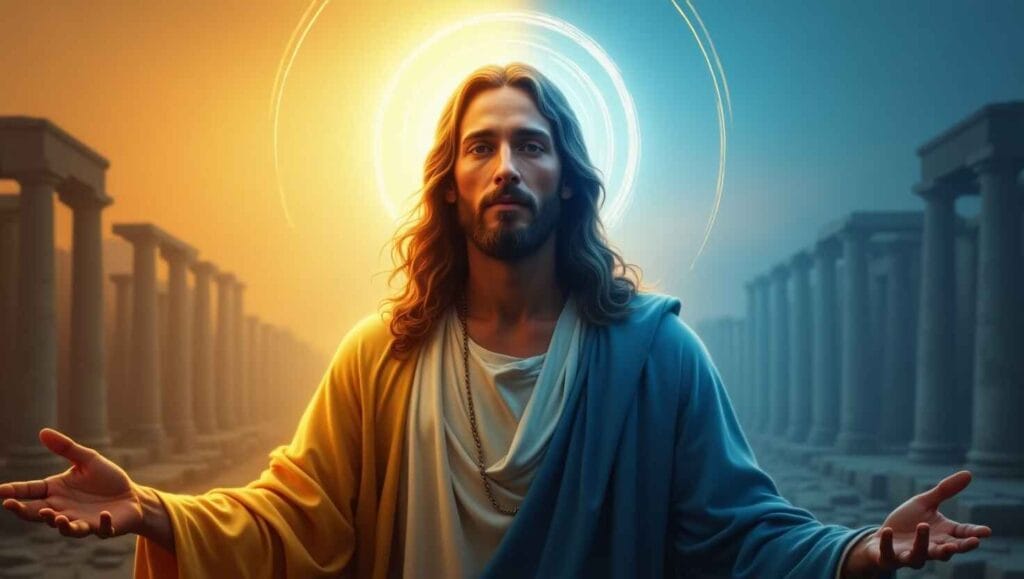
I. Subversion of Societal Norms
A. Religious Hierarchies
In first-century Palestine, religion and power were deeply intertwined. The Temple in Jerusalem was not merely a place of worship—it was the economic, cultural, and political heart of Jewish life. Its priestly class, particularly the Sadducees, held privileged relationships with Roman authorities. Alongside them were the Pharisees, a group devoted to the meticulous interpretation and enforcement of Mosaic Law. While diverse in belief and practice, these groups together formed a religious elite that held enormous influence over the spiritual and daily lives of the people.
Jesus’s ministry directly challenged this religious structure. He did not ignore the authority of the law, but he reinterpreted it through the lens of compassion, justice, and divine mercy. Nowhere is this challenge more pointed than in Matthew 23, a searing critique of the Pharisees and scribes. In it, Jesus accuses them of hypocrisy, burdening the people with legalistic rules while neglecting “the weightier matters of the law: justice, mercy, and faithfulness” (Matthew 23:23). He criticizes their hunger for titles and public recognition, exposing the way religion had become a tool for social control and personal prestige rather than a path to righteousness.
One of the most radical aspects of Jesus’s challenge to religious orthodoxy was his healing on the Sabbath. In several Gospel accounts, Jesus heals those who are sick or disabled on a day when all labor was strictly forbidden by Jewish tradition. When confronted by religious authorities for violating the Sabbath, Jesus responds not with apology but with principle: “The Sabbath was made for man, not man for the Sabbath” (Mark 2:27). In these moments, he asserts that human need and compassion outweigh ritual law, a deeply subversive stance in a religious culture that prioritized legal adherence.
Furthermore, Jesus extended his ministry to those considered unclean or outside the religious boundaries of purity. He touched lepers, allowed bleeding women to come near, and dined with those classified as sinners. These actions were not merely compassionate—they were revolutionary. Jewish purity laws functioned to divide society between the clean and unclean, righteous and unrighteous. By disregarding these distinctions, Jesus undermined the very system that sustained religious exclusivity. He showed that access to God was not limited to the ritually pure or socially respected but open to all who sought healing, forgiveness, and love.
A striking example is Jesus’s interaction with Gentiles, non-Jews traditionally viewed as outside the covenant community. In Matthew 15, a Canaanite woman begs Jesus to heal her daughter. Though the initial exchange seems tense, Jesus ultimately affirms her faith and grants her request. Such moments point to an expanding vision of inclusion, one that would eventually lead to the early Church’s embrace of Gentile believers.
In every confrontation with the religious establishment, Jesus is not attacking the faith itself, but rescuing it from the grip of elitism. He reveals a God more interested in hearts than regulations, in relationship over ritual, and in liberation over legalism. His subversion of religious hierarchy was not a rejection of holiness, but a redefinition of it—grounded in humility, love, and justice.
B. Social Hierarchies
Jesus’s radical vision extended beyond religious boundaries to the broader social hierarchies of his time. Roman Judea was a deeply stratified society where birth, gender, wealth, and ethnicity dictated one’s place in the social order. The elite—Roman officials, Herodian rulers, and priestly aristocrats—enjoyed immense power, while the vast majority of people lived under heavy taxation, land insecurity, and social exclusion.
Into this oppressive structure, Jesus introduced a new ethic—a reversal of values that honored the poor, the marginalized, and the despised. He did not merely comfort them; he elevated them as central to God’s kingdom.
One of the clearest articulations of this reversal is found in the Beatitudes (Matthew 5:3–12), the opening of the Sermon on the Mount. Here, Jesus declares:
“Blessed are the poor in spirit, for theirs is the kingdom of heaven.”
“Blessed are those who mourn… the meek… those who hunger and thirst for righteousness…”
These statements were not abstract spiritual platitudes—they were political pronouncements. In a world where the wealthy and powerful were seen as blessed by God, Jesus declared the opposite: that the broken, the humble, the oppressed were closest to God’s heart. The Beatitudes flipped the logic of empire on its head. Rome celebrated power, conquest, and glory. Jesus celebrated mercy, humility, and peace.
Jesus’s ministry consistently prioritized those at the bottom of society:
Lepers, who were banished from communities and forced to live in isolation, were not only healed by Jesus but touched—restoring their dignity as well as their health (Mark 1:40–45).
Prostitutes and tax collectors, social pariahs of the time, were welcomed into Jesus’s circle and even used as moral examples (Luke 7:36–50; Matthew 21:31–32).
Samaritans, considered heretical and racially impure by Jewish standards, were held up by Jesus as models of compassion and neighborliness (Luke 10:25–37).
The poor, rather than being pitied from a distance, were seen by Jesus as inheritors of the Kingdom (Luke 6:20).
By actively engaging with these groups, Jesus dismantled the social constructs that dehumanized them. He did not simply offer individual salvation; he modeled a new kind of community, one built not on status or purity but on love, mutual service, and equality.
The parables he told were similarly subversive. In the Parable of the Good Samaritan, it is not the respected priest or Levite who helps the wounded man, but a despised Samaritan—implying that true neighborliness transcends religious and social categories. In the Parable of the Workers in the Vineyard, all laborers receive the same wage regardless of how long they worked—suggesting a divine economy not based on merit, but grace.
These teachings and actions were not theoretical. They posed a real threat to systems of power built on exclusion and control. By lifting up the lowly and humbling the exalted, Jesus was reshaping society from the ground up.
C. Gender Roles
Perhaps one of the most profound yet often underemphasized aspects of Jesus’s radicalism was his treatment of women. In a patriarchal society where women were often viewed as property, excluded from religious leadership, and discouraged from public life, Jesus’s interactions with women were nothing short of revolutionary.
He not only included women in his ministry—he honored, taught, and defended them in ways that directly challenged cultural norms.
Consider the story of Mary of Bethany (Luke 10:38–42). While her sister Martha attends to domestic duties, Mary sits at Jesus’s feet—a position traditionally reserved for male disciples learning from a rabbi. When Martha objects, Jesus gently but firmly defends Mary’s choice, saying she has “chosen what is better.” In doing so, he legitimizes a woman’s place not just in the home but in theological learning and spiritual leadership.
The Samaritan woman at the well (John 4) is another striking example. Jesus initiates a theological conversation with a woman, a Samaritan, and someone with a complicated marital history—three barriers that would have made such an encounter socially unacceptable. Yet not only does Jesus engage her with respect and depth, but he also reveals to her that he is the Messiah, making her one of the first evangelists in the Gospel narrative.
Throughout the Gospels, women are portrayed as central witnesses to Jesus’s life, death, and resurrection:
Women followed Jesus and supported his ministry financially (Luke 8:1–3).
They stood by him at the cross when most of the male disciples fled.
They were the first to witness the resurrection and to proclaim it—despite the fact that women’s testimonies were not considered legally valid in Jewish courts.
These examples are not incidental—they reflect Jesus’s deliberate choice to break with patriarchal assumptions and extend full spiritual agency to women. In doing so, he laid the groundwork for a radically inclusive vision of community, where gender did not determine one’s worth, role, or access to God.
Even more telling is the way Jesus refused to objectify or shame women, even when societal norms demanded it. When a woman caught in adultery is brought before him (John 8:1–11), Jesus deflects the crowd’s desire for punishment by challenging the accusers to examine their own sin. He then tells the woman, “Neither do I condemn you.” This moment highlights his rejection of both the legalistic harshness and the gendered double standards of the time.
His interaction with the woman who anointed him with perfume (Luke 7:36–50) is another example of Jesus honoring female agency and insight. While others are scandalized by her act, Jesus defends her, saying she has done something beautiful and prophetic—anointing him for burial in a way that shows a deeper understanding of his mission than his male disciples often displayed.
Conclusion to Section I: Jesus the Norm-Breaker
Jesus’s life and teachings consistently undermined the dominant religious, social, and gender norms of his world. He challenged religious elites not with violence, but with wisdom and compassion. He elevated the downtrodden, not out of pity, but from a conviction that they were beloved of God and central to his kingdom. He included and empowered women, not as a token gesture, but as a core part of his ministry and message.
These actions were deeply intentional. Jesus was not a passive bystander in history but an active reformer, engaging the systems of his time with boldness, grace, and strategic clarity. His subversion was not chaos—it was order restored. His resistance was not rebellion—it was redemption unfolding.
In a world shaped by hierarchy and exclusion, Jesus embodied and proclaimed a new way: a community where all are seen, valued, and invited to the table. He didn’t simply offer a better religion; he revealed a better humanity.
This was—and still is—the true revolution of Jesus.

II. Economic Justice: Jesus and the Revolution of Wealth
Introduction to Economic Justice
The teachings of Jesus often provoke deep spiritual reflection—but they also spark intense ethical inquiry, especially regarding economic justice. Although modern interpretations frequently spiritualize his message, the Gospels portray a Jesus who was acutely aware of the material suffering of his people and frequently addressed issues of wealth, poverty, and exploitation.
Jesus did not simply encourage individual acts of generosity; he challenged entire economic structures. He saw firsthand how Roman imperial taxation, land monopolization, and religious complicity with greed crushed the poor. His teachings, parables, and actions reveal a sustained and radical critique of economic injustice—and an alternative vision rooted in solidarity, dignity, and divine abundance.
Jesus’s message about money was not incidental. It was central to his broader mission of liberation. In fact, more than one-third of his parables address issues of wealth, possessions, debt, or labor. Far from being morally neutral, wealth was often depicted by Jesus as a spiritual and social hazard, one that could corrupt the soul, separate communities, and prevent entrance into the Kingdom of God. In this section, we will explore how Jesus confronted inequality, called for a transformed relationship with wealth, and modeled a different kind of economy—one rooted in compassion, equity, and radical trust in God.
A. Denouncing Exploitation and Wealth Hoarding
One of the most striking features of Jesus’s economic teachings is his consistent denunciation of the accumulation of wealth at the expense of others. His critique was not aimed at wealth per se, but at the systems and attitudes that dehumanized people in pursuit of riches.
In Luke 6:24, Jesus declares, “But woe to you who are rich, for you have already received your comfort.” This is not simply a spiritual warning—it is a judgment against those who have insulated themselves in luxury while their neighbors suffer. It reflects a prophetic tradition in Judaism that condemned unjust gain and called for the redistribution of land and forgiveness of debts (see Isaiah 58, Amos 5, and Deuteronomy 15).
The Parable of the Rich Fool (Luke 12:13–21) offers another clear warning. A wealthy man builds larger barns to store his abundance, thinking he can relax and enjoy life. But God calls him a fool, reminding readers that life is not measured by possessions. The parable critiques hoarding and self-centeredness, especially in a world where many go without.
Jesus also draws a direct link between wealth and injustice in his confrontation with the rich young ruler (Mark 10:17–31). When the man asks what he must do to inherit eternal life, Jesus tells him to “sell all you have and give to the poor.” The man walks away sorrowful, revealing that his wealth holds him captive. Jesus responds, “It is easier for a camel to go through the eye of a needle than for a rich person to enter the kingdom of God.” This is not hyperbole—it is a serious reflection on how wealth can blind individuals to the suffering of others and block participation in God’s just order.
In these teachings, Jesus is not demonizing the wealthy, but he is calling them to a radical reorientation—to see their wealth not as personal entitlement but as a resource for communal well-being. His message was especially threatening to those whose wealth was built on exploitation, such as elite landowners and tax collectors who profited from Roman systems of extraction.
B. Economic Inclusion and Redistribution
Jesus’s response to economic injustice was not limited to critique—he also modeled and taught a vision of economic inclusion and redistribution, grounded in love and equity.
One of the clearest expressions of this can be found in Zacchaeus the tax collector (Luke 19:1–10). Zacchaeus, a wealthy man who had extorted money through his position, climbs a tree to see Jesus. When Jesus calls him down and stays at his house, Zacchaeus responds by pledging to give half of his possessions to the poor and to repay those he has cheated fourfold. Jesus then declares, “Today salvation has come to this house.” Notably, salvation here is not simply about belief or repentance—it is directly tied to economic restitution and generosity.
In the feeding of the five thousand (Mark 6:30–44), Jesus does more than perform a miracle—he demonstrates an alternative economy of sharing and abundance. With a few loaves and fish, he feeds thousands. Rather than sending the people away hungry, he insists that the disciples feed them. This moment reflects divine provision, yes, but also the principle that when resources are shared instead of hoarded, there is more than enough for all.
Jesus frequently encouraged the sharing of resources. In Luke 12:33, he commands, “Sell your possessions and give to the poor.” In Matthew 6, he teaches not to store treasures on earth but to invest in heavenly treasure—understood as acts of justice and mercy. His ideal community was not built on private accumulation but on mutual care.
This ethos of sharing is later seen in the early Christian community described in Acts 2:44–45: “All who believed were together and had all things in common; they would sell their possessions and goods and distribute the proceeds to all, as any had need.” This practice did not arise from abstract theology—it was a direct extension of Jesus’s teachings.
C. The Parables: Stories of Economic Subversion
Many of Jesus’s most famous parables center on economic themes. These stories are not simplistic moral tales; they are subversive narratives designed to provoke, challenge, and invert the listener’s expectations.
In the Parable of the Workers in the Vineyard (Matthew 20:1–16), laborers hired late in the day receive the same wage as those who worked all day. When the earlier workers complain, the landowner responds, “Are you envious because I am generous?” This parable critiques the market logic of merit and wage proportionality, replacing it with a vision of grace-based equity.
In the Parable of the Talents (Matthew 25:14–30), often misunderstood as a call to capitalist productivity, Jesus may actually be exposing the dangers of profit-driven systems. The servant who buries the money refuses to participate in exploitation, accusing the master of being “a hard man, reaping where you did not sow.” The master calls him wicked, but the parable ends with ambiguity—highlighting the tension between earthly economies and divine values.
Another striking example is the Parable of the Rich Man and Lazarus (Luke 16:19–31). A rich man feasts daily while Lazarus, a poor beggar, lies at his gate. After death, their positions are reversed—Lazarus is comforted in heaven, and the rich man suffers in torment. The story warns against indifference to poverty and makes clear that material wealth without compassion leads to spiritual ruin.
These parables reveal how Jesus used storytelling to challenge economic assumptions, expose injustice, and point to an alternative vision of life rooted in generosity and mutual dignity.
D. The Temple Cleansing: Confronting Religious-Economic Corruption
Perhaps one of Jesus’s most dramatic actions—the cleansing of the Temple—was also one of his most economically charged. Found in all four Gospels (e.g., Matthew 21:12–13, John 2:13–17), this episode depicts Jesus entering the Temple courts and overturning the tables of the money changers, driving out those who bought and sold animals.
This was not a spontaneous outburst—it was a public, prophetic act of resistance. The Temple had become, in Jesus’s words, “a den of robbers.” Scholars agree that the phrase doesn’t just refer to dishonesty, but to a systemic exploitation—the intertwining of religion and economic extraction. Pilgrims were required to pay Temple taxes and purchase animals for sacrifice, often at inflated prices. This system disproportionately burdened the poor, turning a house of prayer into a marketplace.
By disrupting the Temple economy, Jesus struck at the heart of both religious legitimacy and economic control. This act, more than any other, may have precipitated the plot to arrest and execute him. It showed that Jesus was not simply preaching about the kingdom—he was embodying it in a way that challenged the pillars of power.
E. The Jubilee Ethic: Echoes of Ancient Justice
Underlying much of Jesus’s teaching on wealth is the ethic of Jubilee, rooted in Hebrew Scripture (Leviticus 25). Jubilee was a radical economic system commanded by God, involving:
The forgiveness of debts every seven years (Deuteronomy 15),
The liberation of slaves, and
The restoration of land to original families every 50th year.
While it’s unclear how fully Jubilee was ever practiced in ancient Israel, its spirit infused the prophetic tradition—and Jesus appears to reclaim it at the very beginning of his ministry.
In Luke 4:16–21, Jesus reads from the scroll of Isaiah and declares:
“The Spirit of the Lord is upon me… He has anointed me to proclaim good news to the poor… to proclaim liberty to the captives… to set the oppressed free… to proclaim the year of the Lord’s favor.”
This is Jubilee language, and Jesus claims it as his mission statement. It is a vision of economic, social, and spiritual liberation, all intertwined. He is not merely promising spiritual comfort—he is announcing a new order in which debts are forgiven, the enslaved are freed, and dignity is restored.
Conclusion to Section II: Toward a Kingdom Economy
Jesus’s message was never a retreat from economic reality—it was a direct confrontation with it. He saw how unjust systems exploited the vulnerable, how wealth hardened hearts, and how religious structures often aided in economic oppression. In response, he preached a gospel of economic justice, one that called for:
Redistribution, not hoarding;
Community, not competition;
Generosity, not greed.
His vision is not capitalism with a conscience or socialism with a soul—it is Kingdom economics, rooted in love, trust, and the inherent worth of every person.
To follow Jesus is to reject both the apathy of privilege and the despair of poverty. It is to live generously, disrupt greed, forgive debts, and build communities where no one is disposable.
In the world of Jesus, the hungry are fed, the rich are warned, and the tables are turned—literally and spiritually. He did not die because he was a moral teacher; he was crucified because his vision of justice threatened the powerful. And yet, in that very death and resurrection, he revealed the unbreakable truth that a just and generous world is not only possible—it is breaking in, here and now.
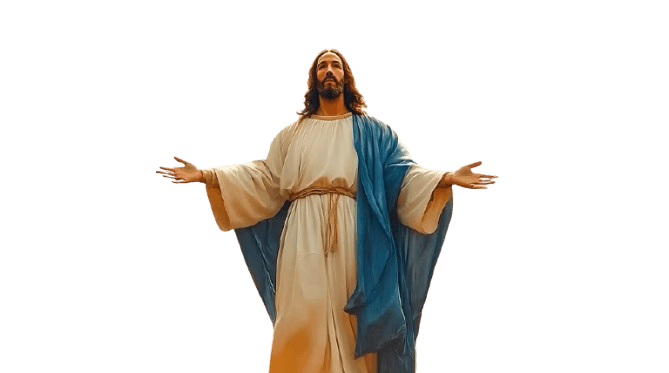
III. Nonviolent Resistance as Political Strategy
Introduction: Jesus as a Political Dissident through Peace
Jesus of Nazareth is often portrayed as a purely spiritual figure—meek, mild, disconnected from the rough edges of political life. Yet to read the Gospels with fresh eyes is to encounter a profoundly strategic activist, someone whose nonviolent resistance unsettled religious elites, disrupted imperial expectations, and inspired movements of change that extended far beyond his death.
Jesus did not wield swords or command armies. Instead, he wielded truth, symbolism, presence, and radical compassion as tools of confrontation. He understood the risk of direct action. He anticipated repression. And he deliberately chose nonviolence—not as passive submission but as a politically disruptive, theologically potent, and morally powerful force.
In Roman-occupied Judea, where revolts were frequent and ruthlessly crushed, Jesus charted a new way. He neither collaborated with the empire nor took up arms against it. Instead, he confronted its logic of domination with love, its brutality with dignity, and its fear with faith. This section will explore how Jesus’s nonviolent resistance was not just a personal ethic but a calculated and prophetic strategy for social transformation.
A. Roman Judea: A Climate Ripe for Resistance
To grasp the revolutionary nature of Jesus’s actions, we must understand the political environment in which he lived.
Judea under Rome was a land of heavy taxation, violent repression, and growing resentment. The Roman Empire extracted wealth from its provinces through corrupt tax systems (often outsourced to local collaborators), while using military force to crush dissent. The Jewish population, especially the rural poor, bore the brunt of this oppression.
Multiple resistance movements arose in this context:
The Zealots advocated violent revolution.
The Essenes withdrew into desert communities.
The Sadducees, the priestly elite, maintained religious and political ties with Roman authorities.
The Pharisees, though not pro-Rome, emphasized strict religious observance as the path to redemption.
Jesus refused to fit neatly into any of these categories. He challenged the collaboration of the elite, refused violence, remained in the public square, and called for a new kind of kingdom—one that inverted the empire’s values from the bottom up.
B. The Politics of Symbol and Action: Turning Resistance into Witness
Much of Jesus’s activism operated through powerful symbolic actions—parables, public gestures, and performances that revealed deeper truths and challenged imperial norms.
1. The Triumphal Entry (Mark 11:1–11)
Jesus’s entry into Jerusalem is often seen as a spiritual procession, but it was also a political parody. As Roman governors like Pontius Pilate would enter Jerusalem with horses, chariots, and armed guards to assert dominance during Passover, Jesus rode a donkey—a symbol of humility and peace.
Crowds shouted “Hosanna” (meaning “save us”), waved palm branches (a nationalist symbol), and called him “Son of David” (a royal title). The entire scene mimicked a military procession but subverted it completely. This was political theater—a demonstration against the logic of empire that said peace came through violence. Jesus presented an alternative: a messianic reign grounded in justice, humility, and nonviolence.
2. Paying Taxes to Caesar (Mark 12:13–17)
When asked whether it was lawful to pay taxes to Caesar—a loaded political question—Jesus responded with the now-famous line:
“Render to Caesar what is Caesar’s, and to God what is God’s.”
Far from evading the issue, Jesus exposed the heart of it: Everything ultimately belongs to God, not Caesar. By asking for a denarius, he revealed his opponents were complicit in the Roman economy. The image of Caesar on the coin was a symbol of imperial power, but the image of God is found in human beings. Jesus subtly dismantled imperial claims to total authority, suggesting loyalty to God subverts total allegiance to empire.
C. Strategic Nonviolence in Action
Jesus’s ministry reveals a consistent pattern of engaging oppressive power without mimicking it.
1. The Sermon on the Mount (Matthew 5–7)
The Sermon is often cited as a blueprint for Christian ethics, but it is also a radical manifesto of resistance.
Take Jesus’s teaching:
“If anyone slaps you on the right cheek, turn to them the other also.”
This is not submission; it’s a strategic refusal to be humiliated. In a patriarchal culture, a backhand slap was meant to demean. By turning the other cheek, the victim forces the aggressor to confront their own violence, disrupting the dynamic of power.
“If anyone forces you to go one mile, go with them two miles.”
This references the Roman law allowing soldiers to compel civilians to carry their gear for one mile. By offering a second mile, the person regains agency, confronting the unjust demand with dignity and unsettling the soldier with unexpected cooperation.
“Give to the one who asks you, and do not turn away from the one who wants to borrow from you.”
This defies the economic logic of scarcity and self-protection, offering instead an ethic of generosity as resistance—disarming systems of control by refusing to live by fear.
Jesus was not preaching weakness—he was offering tools for the oppressed to reclaim power without violence.
D. Confronting Power Without the Sword
Jesus repeatedly confronted unjust power structures—but always through truth and love, never through domination.
1. Before Pilate (John 18:28–40)
When questioned by Pontius Pilate, Jesus says,
“My kingdom is not of this world. If it were, my servants would fight…”
This does not mean his kingdom is otherworldly or irrelevant. Rather, it operates by different rules. It does not need violence to establish its authority. This is a direct contrast to Roman imperialism, which relied on war and fear. Jesus’s kingdom spreads through service, healing, and truth.
2. Gethsemane: Rejecting Armed Defense (Matthew 26:47–56)
When soldiers come to arrest Jesus, one of his followers draws a sword and cuts off a man’s ear. Jesus immediately rebukes him:
“Put your sword back in its place… for all who draw the sword will die by the sword.”
He heals the wounded man, refusing to let his movement be defined by violence. Even at the moment of betrayal, Jesus chooses peace. His arrest becomes a final witness to the power of nonviolence, even in the face of certain death.
E. The Cross as the Ultimate Act of Resistance
The crucifixion of Jesus is not just a moment of suffering—it is a revolutionary event.
To Rome, crucifixion was a tool of terror and humiliation, reserved for slaves and political rebels. By enduring the cross, Jesus exposed the brutality of empire, but also transformed the symbol of execution into a sign of ultimate hope.
The cross reveals that:
Violence does not win.
Empire cannot crush truth.
The way of love, though it suffers, endures and rises.
The resurrection is God’s cosmic “yes” to Jesus’s resistance. It vindicates his life, his teachings, and his path of peace. His followers understood this. The early church spread not with swords, but with communities of compassion, forgiveness, and fearless joy.
F. Implications for Today: Jesus’s Model of Resistance Lives On
Jesus’s strategy of nonviolent resistance has inspired countless movements:
Martin Luther King Jr. modeled the Civil Rights Movement on Jesus’s ethics.
Mahatma Gandhi, though not a Christian, drew deeply from the Sermon on the Mount.
Liberation theologians in Latin America saw Jesus as a liberator who stood with the poor.
Modern peacebuilders in Palestine, South Africa, and beyond continue to invoke Jesus’s model of resistance.
Nonviolence is often misunderstood as weakness. But in Jesus’s life, it is the ultimate strength—the power to tell the truth, bear the cost, and refuse to become what we oppose.
His strategy was not passive endurance, but bold confrontation without hatred. It aimed not just to topple systems, but to transform hearts and rebuild society from the inside out.
Conclusion to Section III: The Power of Peace in the Face of Empire
Jesus did not merely teach peace—he lived it as a strategy of liberation. In a time of empire, oppression, and religious complicity, he chose a radically different way. His nonviolence was not escape; it was engagement. Not resignation, but revolution.
He stood with the poor. He walked among the sick. He told the truth to power. He bore the consequences of resistance. And he rose again, bearing the wounds of love.
In Jesus, we find not only a teacher or a savior—but a strategist, a revolutionary of the highest kind: one who defeated death with mercy, answered hate with grace, and shattered empire with hope.

Conclusion: Jesus—Strategic Peacemaker, Radical Reformer, Living Legacy
Jesus of Nazareth is too often confined to the pages of sentiment or spiritual abstraction. For centuries, he has been portrayed as a passive figure—gentle, quiet, removed from the political world—a shepherd tending to souls, not systems. Yet, when we engage more deeply with the Gospel narratives and the historical context of Roman-occupied Judea, a far more powerful and provocative image of Jesus emerges. One not of detachment, but of intentional disruption. One not of meek retreat, but of strategic engagement. One not of conformity, but of courageous transformation.
Jesus was a social reformer, a nonviolent activist, and a revolutionary in the truest sense of the word. His vision for humanity reached into the structures that held people captive—the religious systems that excluded, the economic orders that oppressed, the social customs that dehumanized—and exposed them for what they were: broken.
This conclusion brings together the threads we’ve examined: Jesus’s subversion of societal norms, his critique of economic injustice, and his nonviolent resistance as a method of political transformation. Together, they form a cohesive picture of a radical reformer whose legacy continues to speak directly to the struggles of the modern world.
A Kingdom Turned Upside Down
From the moment Jesus began his public ministry, he spoke of a new kind of kingdom—the Kingdom of God. But this wasn’t a kingdom like Rome’s, founded on conquest and hierarchy. Nor was it a purely spiritual realm, removed from earthly injustice. It was a real, grounded vision of how humanity could live differently—based on love, justice, humility, and mercy.
He deliberately inverted every expectation:
The first would be last, and the last, first.
The poor were called blessed, while the rich were warned.
Children, women, foreigners, and the marginalized were placed at the center, not the edges.
By telling stories that elevated Samaritans, by healing on the Sabbath, by eating with tax collectors and prostitutes, Jesus was not simply being compassionate—he was publicly rejecting the purity codes and caste systems of his time. He modeled inclusion, not as a personal virtue, but as a direct challenge to exclusionary systems. In doing so, he exposed the corruption of those who held power—not only the Roman authorities but also the temple elite who had aligned themselves with empire.
Economic Justice: More Than Charity
Much of Jesus’s teaching dealt with the subject of wealth and power. He spoke more about money than he did about prayer or even heaven. But unlike modern prosperity preachers who equate wealth with divine favor, Jesus consistently warned against riches and called for radical generosity.
Consider the rich young ruler (Mark 10), who could not give up his possessions. Jesus did not just invite him to spiritual belief—he challenged him to surrender the economic foundation of his privilege. Or the parable of the rich man and Lazarus (Luke 16), which dramatically reversed the afterlife expectations of the wealthy elite. Or his pronouncement:
“You cannot serve both God and money” (Matthew 6:24).
Jesus’s economic vision was not a call to handouts—it was a reconstruction of human value. In the Kingdom of God, people matter more than profit, community outweighs accumulation, and justice is measured by how the least are treated, not how much the elite control.
His vision called for mutual aid, debt forgiveness, hospitality for the poor, and care for the stranger. These were not side ministries—they were core to his message. They represented a new social order that directly opposed both Roman exploitation and religious complacency.
Nonviolent Resistance: A Tactic of Strength, Not Weakness
Perhaps most radical of all was Jesus’s method of resistance. In a culture simmering with tension under Roman occupation, resistance typically took one of two forms: violent uprising or silent submission. Jesus modeled a third way—active nonviolence.
This was not inaction. It was a deeply intentional choice to confront injustice without becoming unjust. He did not encourage people to escape suffering, but to confront it without hatred, without vengeance, and without reproducing the logic of violence.
He turned the other cheek—not to tolerate abuse, but to force the abuser to see their own violence. He walked the extra mile—not to comply, but to disrupt unjust demands. He wept for Jerusalem—not as resignation, but as a prophetic grief for a people lost in cycles of power and bloodshed.
And in the end, when arrested and crucified, he refused to respond with anger or retaliation. He healed his enemies. He forgave his executioners. Not because the cross was good, but because he refused to let evil define the terms of his mission.
This kind of resistance has echoed through history. Martin Luther King Jr., Desmond Tutu, Oscar Romero, and many more have pointed to Jesus’s example as the foundation for their movements. They understood what Jesus lived: that nonviolence is not weakness—it is power under control, rooted in love, and wielded with strategic clarity.
The Cross as Cosmic Resistance
The crucifixion of Jesus is often misunderstood as the end of a failed revolution. But the early Christian community understood something deeper: the cross was not defeat—it was victory on different terms.
Crucifixion was Rome’s ultimate tool of terror—a public statement that rebellion would be crushed. By willingly going to the cross, Jesus did not submit to death. He exposed it. He transformed the cross from a symbol of empire’s dominance into a symbol of God’s defiant grace.
In doing so, Jesus redefined power itself. Power was no longer about control, violence, or dominance. True power was love that could not be silenced, truth that could not be buried, and hope that rose even from the grave.
The resurrection was not a mystical metaphor. It was a public declaration that Rome’s verdict was overturned—that God had vindicated Jesus’s life and message, and that a new kind of kingdom had truly begun.
Living the Legacy: What It Means for Us Today
To follow Jesus, then, is not simply to worship him, but to join his movement.
It means standing with the excluded, questioning unjust systems, choosing peace in the face of violence, and loving without compromise. It means risking comfort, status, and even safety in the name of a higher justice. It means refusing to give Caesar what belongs to God: our allegiance, our conscience, our humanity.
In a world marked by nationalism, economic exploitation, racial injustice, and religious exclusion, the radical Jesus still speaks. Not softly—but urgently. Not privately—but prophetically.
He calls us to rethink what we believe about leadership, power, wealth, and community. He asks us to see the divine not in cathedrals or empires, but in the faces of the oppressed, the cries of the hungry, and the quiet resistance of those who dare to hope.
This is not a nostalgic memory. It is a living challenge.
Final Reflection: Jesus, the Uncompromising Hope
Jesus was not crucified because he preached kindness. He was crucified because he confronted empire, defied religious hypocrisy, and declared that another world was possible.
He disrupted systems. He disarmed powers. He declared the reign of God not as theory but as practice—a practice lived in shared meals, healed wounds, restored dignity, and fearless truth.
Let us not reduce him to a figure of personal piety alone. Let us remember him as he truly was: a radical for justice, a strategist for peace, and a lover of those the world forgot.
To believe in Jesus is to walk in his steps—not just to pray, but to act. Not just to admire, but to participate. Not just to remember his death, but to live out his resurrection—as witnesses to a kingdom that turns everything right-side up.
Because in Jesus, resistance is love, reform is holiness, and peace is power.
To explore more about how Jesus continues to impact lives across cultures and contexts, visit our Jesus for Everyone section. This category dives deeper into his inclusive ministry and teachings. For a broader perspective on nonviolent movements inspired by Jesus’s model, check out this insightful article on the legacy of Christian nonviolence. We also appreciate backlinks from websites or blogs that share our mission—if you found this article helpful, feel free to link back to welovegoddaily.com to support our message.
